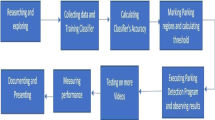Abstract
Computer vision has a wide and diverse range of applications nowadays. A particular one is automatic detection of parking lot occupancy, where a computer has to identify whether a parking lot space is empty or occupied. As in any visual classification problem, detecting parking lot spaces relies on the existence of a representative visual dataset. This problem of binary classification is commonly approached using features with adequate level of invariance to changes in illumination or rotation, that allow feeding these features into classifiers such as the SVM. Most used approaches are based on the use of convolutional neural networks, some times based on pre-trained models which in general have quite high performance. however several of these methods are tested with common experiments that do not take into account the variations that occur when training with different combinations of angles, lighting variations, and weather types. That is why in this paper we present a comparison between two approaches to solve the problem of parking lot classification with two methods: Convolutional Neural Networks and Bag of Features. In this paper we show how to use the standard Bag-of-features model to learn a visual dictionary, and use it to classify empty and occupied spaces. Results are compared with CNN approaches, emphasizing on accuracy, sensitivity analysis, and execution time.
Access this chapter
Tax calculation will be finalised at checkout
Purchases are for personal use only
Similar content being viewed by others
References
Ahrnbom, M., Aström, K., Nilsson, M.: Fast classification of empty and occupied parking spaces using integral channel features. In: Conference on Computer Vision and Pattern Recognition Workshops (2016)
Amato, G., Carrara, F., Falchi, F., Gennaro, C., Meghini, C., Vairo, C.: Deep learning for decentralized parking lot occupancy detection. Expert. Syst. Appl. 72, 327–334 (2017)
Amato, G., Carrara, F., Falchi, F., Gennaro, C., Vairo, C.: Car parking occupancy detection using smart camera networks and deep learning. In: IEEE Symposium on Computers and Communication (2016)
Baroffio, L., Bondi, L., Cesana, M., Redondi, A.E., Tagliasacchi, M.: A visual sensor network for parking lot occupancy detection in smart cities. In: 2nd World Forum on Internet of Things (WF-IoT) (2015)
Cazamias, J., Marek, M.: Parking space classification using convoluional neural networks (2016)
De Almeida, P.R.L., Oliveira, L.S., Britto, A.S., Silva, E.J., Koerich, A.L.: PKLot-a robust dataset for parking lot classification. Expert. Syst. Appl. 42, 4937–4949 (2015)
Huang, C.C., Vu, H.T., Chen, Y.R.: A multiclass boosting approach for integrating weak classifiers in parking space detection. In: 2015 IEEE International Conference on Consumer Electronics - Taiwan, ICCE-TW 2015, vol. 8215, no. c, pp. 314–315 (2015)
Huang, C.-C., Vu, H.T.: Vacant parking space detection based on a multi-layer inference framework. IEEE Trans. Circuits Syst. Video Technol. 8215(c), 1598–1610 (2016)
Ichihashi, H., Katada, T., Fujiyoshi, M., Notsu, A., Honda, K.: Improvement in the performance of camera based vehicle detector for parking lot. In: IEEE International Conference on Fuzzy Systems (2010)
Mateus, P.A., Maldonado, E.O., Nino, C.L.: Surveillance and management of parking spaces using computer vision. In: 2015 20th Symposium on Signal Processing, Images and Computer Vision, STSIVA 2015 - Conference Proceedings (2015)
Mery, D.: BALU: a Matlab toolbox for computer vision, pattern recognition and image processing (2011). http://dmery.ing.puc.cl/index.php/balu
True, N.: Vacant Parking Space Detection in Static Images (2007)
Valipour, S., Siam, M., Stroulia, E., Jagersand, M.: Neural networks, parking stall vacancy indicator system based on deep convolutional (2016)
Author information
Authors and Affiliations
Corresponding author
Editor information
Editors and Affiliations
Rights and permissions
Copyright information
© 2018 Springer Nature Switzerland AG
About this paper
Cite this paper
Goez Mora, J.E., Londoño Lopera, J.C., Patiño Cortes, D.A. (2018). Automatic Visual Classification of Parking Lot Spaces: A Comparison Between BoF and CNN Approaches. In: Figueroa-García, J., López-Santana, E., Rodriguez-Molano, J. (eds) Applied Computer Sciences in Engineering. WEA 2018. Communications in Computer and Information Science, vol 915. Springer, Cham. https://doi.org/10.1007/978-3-030-00350-0_14
Download citation
DOI: https://doi.org/10.1007/978-3-030-00350-0_14
Published:
Publisher Name: Springer, Cham
Print ISBN: 978-3-030-00349-4
Online ISBN: 978-3-030-00350-0
eBook Packages: Computer ScienceComputer Science (R0)




